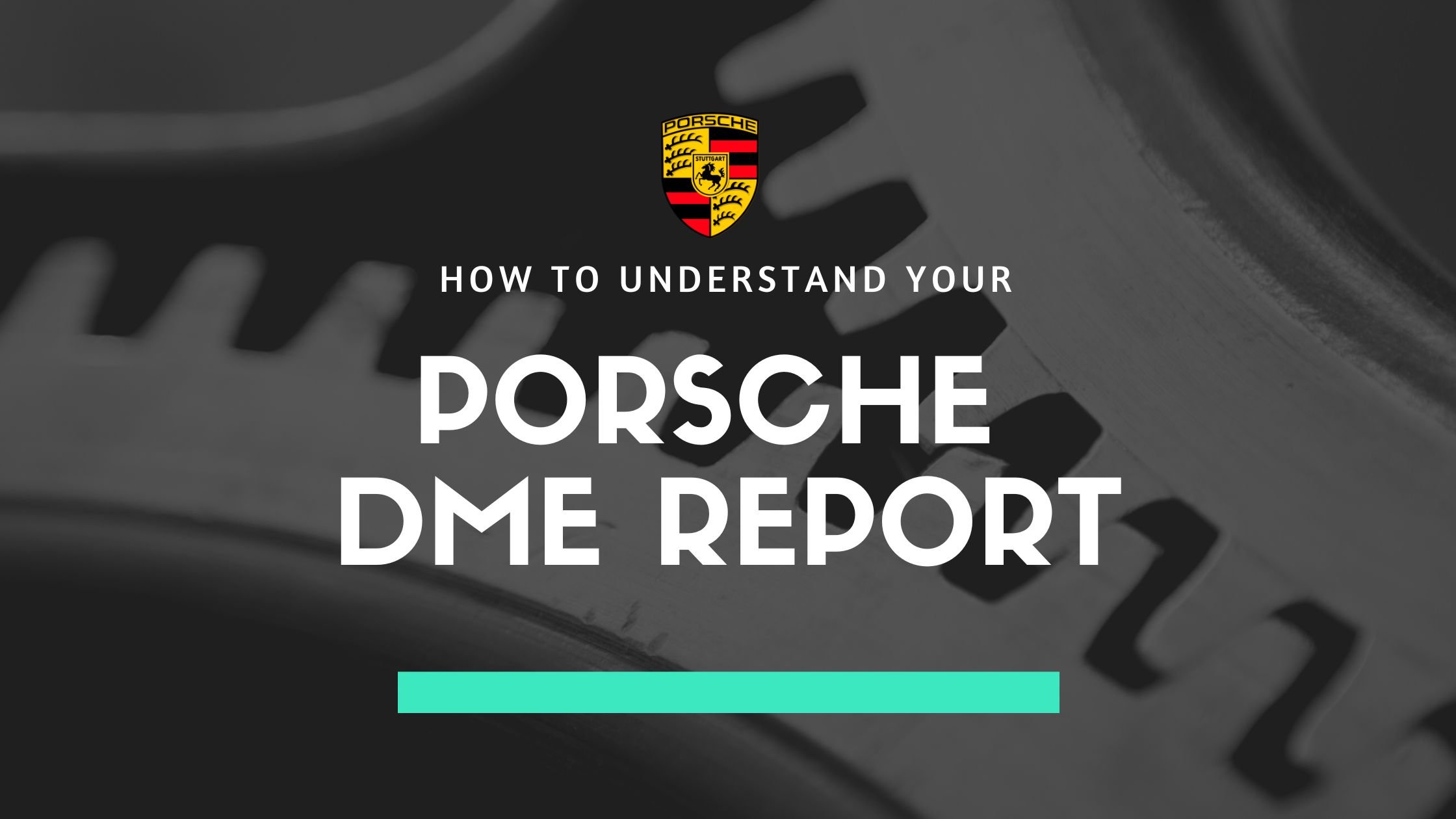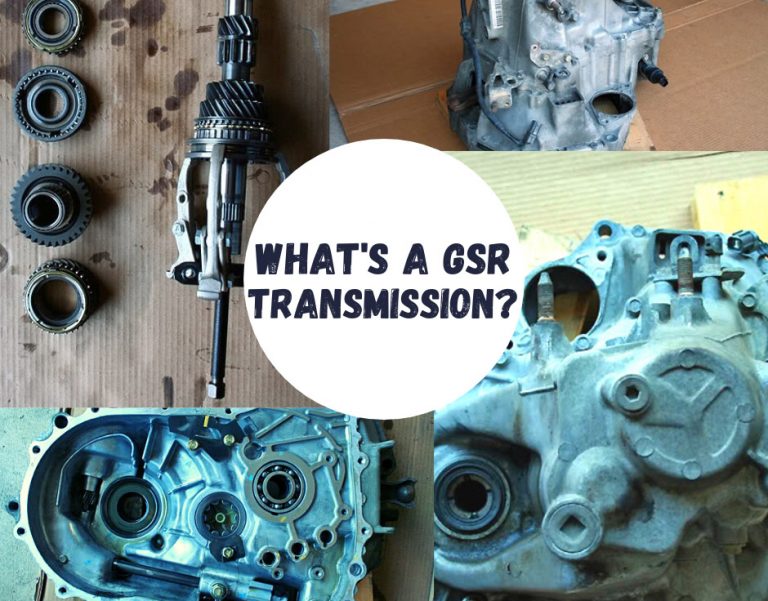Porsche DME Report – The Fool Proof Guide (Detailed)
Getting a DME report for your Porsche doesn’t always have to be bad news. In fact, sometimes it’s nice to know that your Porsche has a clean bill of health. The problem many people have is that they can’t actually tell what they are looking at.
We promise you that after reading this blog post, you will find it far easier to understand your Porsche DME report. This article will cover what a DME report is, how often you should get one, how to understand it properly, and what key things to look out for. Good and bad.
And finally, we will cover the sometimes controversial question, “Can DME reports be wrong”. Let’s get right into it.
What Is A DME Report?
In essence, your DME report is just a diagnostics report generated by your car’s onboard computer. Let’s start by answering a basic but important question.
What Does Porsche DME Stand For?
The DME system stands for Digital Motor Electronics and is essentially an onboard database of certain information about the car.
What Does The Porsche DME System Do?
Additionally, the DME system controls a huge number of aspects of the way your vehicle runs, from how it accelerates to fuel injection. It records everything from speed and distance to carbon emissions output, making the DME report both incredibly detailed, informative and super confusing to the untrained eye.
The DME system connects to a ton of sensors, which means if you get any sort of error pop-up on your dash, you can bet your last dollar that your DME will have recorded it, and it will be right there for you to read about if you request a report.
How Can You Get A Porsche DME Report?
Contrary to popular belief, the DME report is not something you need to request from Porsche, you are actually perfectly entitled and capable of downloading it and reading it directly.
Although to do this, you need to have access to a diagnostic tool, whether it is the official Porsche PIWIS or an aftermarket tool like Durametric diagnostic software.
What’s The Key Data In a Porsche DME Report?
The key data you’ll be able to check from either tool includes odometer accuracy, over-revs, rev limiter usage, and total operating hours, as well as any error codes.
This will give you all the information you need to know about a Porsche to see if it’s been abused throughout its life. This is extremely helpful when you’re doing a pre-purchase check.
How Often Should I Get A DME Report?
There isn’t any rule to the frequency that you should download a DME report. Some people download them often just to check what’s going on, and others have literally never once felt inclined to do so. However, there are some rules of thumb that you can go by if you are looking for a little bit of guidance.
First, you could request a DME report every time you get a service, whether that be yearly, six-monthly, or even more often than that. The DME report will always be looked at during a service to see if there are any fault codes present in the onboard computer that need to be addressed.
All that being said, if you notice any performance issues, then it’s probably a very good idea to download your DME report and see if it contains any information that might inform you of any underlying mechanical issues.
You never know what you will find or how it might help. It can also save your mechanic (and therefore, your wallet) from a couple of hours of work if you can rule out some basic causes for your issues.
How Do I Understand My DME Report?
Now, before I get into this, I have to call out that non-Porsche diagnostic tools, that is, anything other than PIWIS, can sometimes present inaccurate or incomplete data when it generates a DME report.
I’ve heard multiple owners, on forums and from chatting to them at the Porsche club events, that their tools sometimes produce errors or don’t generate the full picture from the DME.
Regardless, the best thing to do is to try and classify what you are looking at. There is a ton of raw data in a DME report. From error codes to sensor readings. From current wear and tear estimations to forecasting your motor’s general health.
Therefore, it can be very beneficial to try and focus on only one or two parts of the report at once. Try to ignore the rest of the data, for the moment, it’s just white noise. You can essentially filter the report into just a few categories for easier reference.
Error codes, sensor readings, fuel and ignition performance, engine performance, emissions data, usage data and maintenance reminders. All of those categories are easy to identify what they are and what kind of data you can find in there without further explanation.
But there are really only a few key things most people are interested in when looking at a DME report: fault codes, odometer accuracy by comparing miles with operating hours and abuse by looking at the over-revs data.
To give you an idea of how over-rev data is presented and what to look out for, I’ve created the table below as an example based on what over-revs look like on a 911 Turbo (this changes from car to car). For example, a 991 GT3 isn’t over-revving at 8,000rpm as it goes all the way to 9,000rpm.
| Range | RPM | Number Of Ignitions at Speed |
|---|---|---|
| 1 | > 6800 and < 7000 (Normal) | (This is the count of times within each range) |
| 2 | > 7000 and < 7200 (Normal) | |
| 3 | > 7200 and < 7400 | |
| 4 | > 7400 and < 7900 | |
| 5 | > 7900 and < 9000 | |
| 6 | > 9000 |
Now you understand how the over-revs data is presented, let’s look at the next table and define what each of the ranges actually means. This is generic for all cars and their DME reports, so you can apply these to any report as the definition of the ranges are the same.
| Range | Over Revs Description |
|---|---|
| 1-2 | Maximum permitted engine speed exceeded; engine damage possible. |
| 3 | Maximum permitted engine speed exceeded; engine damage probable. |
| 4 | Maximum permitted engine speed clearly exceeded; engine damage probable. |
| 5 | Maximum permitted engine speed very clearly exceeded; engine damage very probable. |
| 6 | Engine damage has generally occurred. |
What Should I Be Looking For In My DME Report?
What you should be looking for will depend so much on why you are even checking your report. If you notice that it feels like you are losing power or your car is starting to feel sluggish, you will want to look at the fault codes that appear in the DME report.
Are there any errors? Are your sensor readings in the normal range? Or, most importantly, what do your engine and fuel diagnostics say?
Are you doing a pre-purchase inspection? Then you need to see if the car has been abused, you can do this by using the above sections over-revs definitions and examples to help determine this.
You should also check the operating hours and compare it to the miles on the odometer to determine if the car has been wound back.
If you want more nuanced advice, there is nothing wrong with contacting your local dealership and asking for advice specific to you and your situation. Any good dealership will be more than happy to help.
What Are Some Red Flags In a DME Report?
Some obvious red flags are error codes. If you think everything is fine, but your Porsche DME report says otherwise, then that will always be something that you need to pay attention to.
Additionally, if your DME sensor readings are well outside the normal range, that can be an early indicator that something is going to go wrong before it actually has.
Many people agree that a major red flag is if there are over-revs in the ranges of 5 and 6. People suggest that you generally avoid these cars as they’ve had a tough life and will almost always produce engine issues down the track.
Whether the engine issue is about to appear or whether it’s 10,000 miles away, this is a sure indicator of an issue looming in the future.
Conversely, if you know there is an issue with your car and your DME report says all is well, that can definitely be considered a red flag. This leads us to our next section.
Can DME Reports Be Wrong?
While it is very rare for a DME report to be wrong, per se, it can certainly be misleading or even outright inaccurate to a degree. If you believe your DME report is wrong, you must seriously ask yourself whether you think it is wrong or just wish it was wrong.
More often than not, your answer will be the latter. If in doubt, contact your mechanic or dealership to give you a helping hand in assessing the validity of the data.
Usually, as I mentioned above, this only really occurs when using an aftermarket diagnostic tool. Sometimes, the tools error and don’t read the DME properly. It’s highly unlikely an official tool like PIWIS will encounter these issues often. After all, it is the tool that Porsche themselves use.
Final Verdict On DME Reports
Hopefully, you now find your Porsche DME reports a little less daunting. It is always hard to look at a ton of raw data and know how to interpret it. Is it good? Is it bad?
But with some practice and now some context, you can sift through the white noise and focus on only what matters. Or at least what is immediately relevant to you.
If you are unsure about anything, it is always best to speak to a professional or reach out to other members of the Porsche community, there will be plenty of owners out there more than willing to read your DME report and point out any potential issues.






